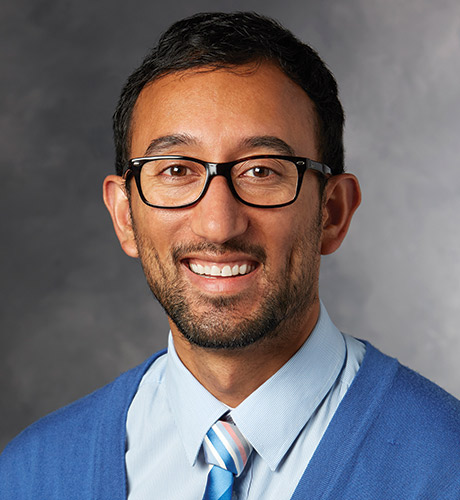UWA and me
After finishing my medical degree and PhD at UWA, I completed ENT surgery training before taking a junior faculty position at Stanford University. Immersed in the entrepreneurial culture of Silicon Valley, the medicine is world class and has a real translational focus. It's surrounded by tech giants such as Apple, Facebook and Google so, really, the medical culture is easily caught up in making great technological advances. Interestingly, being at Stanford was very familiar as it is modelled in the same architectural style as UWA, with plenty of sandstone. For me, UWA was the only place to become a surgeon scientist and it became a springboard for my whole career.
Bringing Stanford's SPARK to Perth
Bringing home some of the opportunities from Silicon Valley was important and why I worked with my brother Adam (UWA Law Alumnus) and Kath Giles (UWA Medicine and MBA Alumna) towards bringing the Stanford SPARK program to Perth.
Sometimes people in Perth blame the tyranny of distance for a lack of opportunities but fail to recognise that the city sits in the same time zone as sixty percent of the world’s emerging middle class, in Asia. Perth has medical talent and a stable, healthy and wealthy population that provides fertile ground for innovation.
SPARK uses industry mentors to help academics translate their discoveries through the valley of death. It does this by providing seed funding and identifying commercialisation milestones in moving discoveries forward, helping researchers overcome obstacles. It fosters collective ecosystem collaborations to bring research discoveries into the clinic or licensed to larger companies when further development is needed.
Keeping a balance between science and surgery
For me, the combination of science and surgery is essential. They are both about problem solving. The science makes me question how things can be done better and the surgery keeps my mind patient focused. Science is constantly evolving and embracing it into clinical practice allows me to evaluate new treatments and technologies effectively. Science helps overcome some of the limitations of surgery and vice versa. Together, they can make solutions come faster.
I was once told that on any single day in the operating theatre you will help a few people, but when you make a discovery, you help millions. Surgery provides an ability to help people instantly whilst science provides an opportunity for large-scale impact. Making it work requires an understanding and supportive family and flexible conditions, including the ability to work outside regular business hours.
Making a difference
A couple of innovations that I’ve been working on include a device that keeps people warm during surgery and a treatment that heals eardrums without surgery. When people get cold during surgery it leads to more wound infections, more blood transfusions and more cardiac events. This all adds up to patient morbidity and a cost burden on the health care system. The hope, with our medical device, is that we can significantly reduce the rate of patients becoming cold, from around fifty percent, in some populations, to 15%. The potential impact of my other innovation will address the treatment of holes in the ear drums which can cause hearing loss and ear infections. The treatment for healing eardrums without surgery could one day help treat 250 million people affected by the condition, especially in the third world.
About Peter
Dr Santa Maria is a clinician scientist with a focus on translational medicine and commercialising medtech and biopharma. He is a director at SPARK Co-Lab and one of the Founders and Chief of the scientific advisory board for Auration Biotech; as well as Founder and Chief Medical Officer for Flo-therm.
After completing his residency with the Royal College of Surgeons Australia in Western Australia and working as the Neurotology Fellow at Sir Charles Gairdner Hospital in Western Australia, he moved to Stanford where he completed an Instructorship in Otology, Neurotology and Skull Base Surgery with a focus on disorders of hearing, balance and the facial nerve. He is an Associate Professor at The University of Western Australia and a Consultant surgeon at Sir Charles Gairdner Hospital and Ear Science Institute Australia.
Peter’s basic science research efforts focus on tympanic membrane wound healing. This developed from his PhD at UWA. His research into novel animal models to study chronic tympanic membrane perforation and chronic suppurative otitis media was accelerated through the SPARK program at Stanford University into Auration Biotech.
Together with a group in Stanford's Biodesign class, Peter has developed a novel device for maintaining perioperative temperature. He acted as principal investigator for this device in its first in-man trial at Stanford University. With the success of this trial, the device is now being developed within Flo-therm.
As a director of SPARK Co-Lab, Peter is dedicated to medical discovery and translation through to the clinical stage.